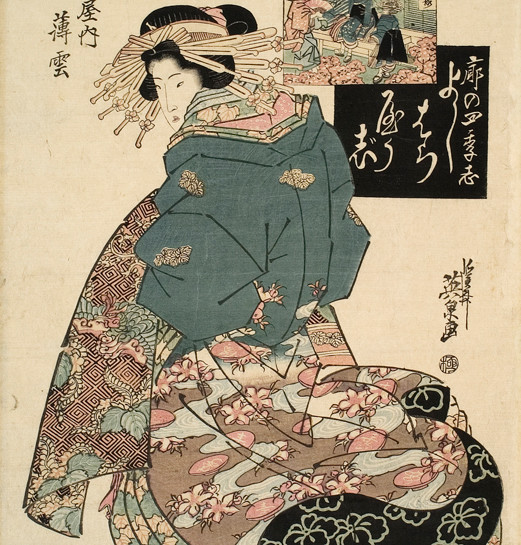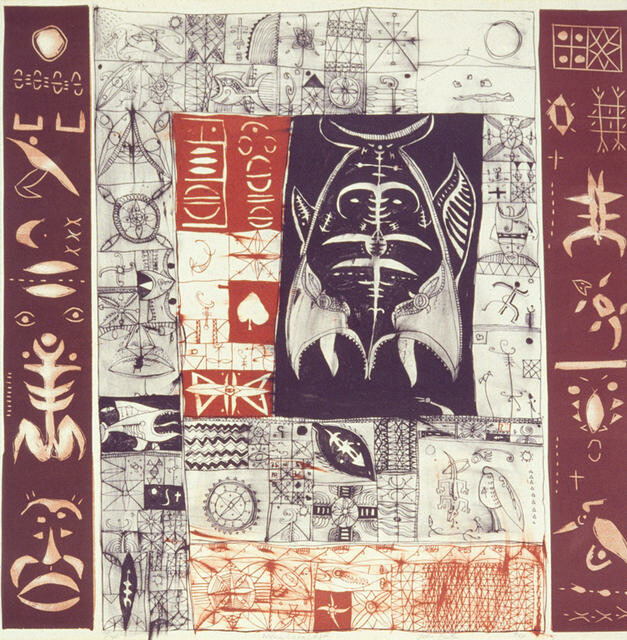John Pule
Niue /
Aotearoa New Zealand, b.1962
Niuean,
Pasifika
Nuka Lafalafa
- 1994
- Lithograph
- Purchased 1995
- 755 x 753mm
- 95/14
Tags: animals, fish (animals), lizards, Oceanic, seas, sea turtles, symbols
Exhibition History
Painters as Printmakers, 19 October 2007 - 20 January 2008
Printmaking has become an increasingly important component in John Pule’s oeuvre over the past decade. He works with a variety of print mediums, including lithography, woodcuts and etching. Nuku Lafalafa is an old, poetic Nuiean term for the ocean, and there are visual references to this subject, such as fish, within the composition. As with Pule’s paintings, many of the compositions found in his prints also incorporate elements of hiapo (traditional Niuean tapa cloth) as well as more personal elements that reflect contemporary life. In Nuku Lafalafa Pule effectively combines two distinctly different types of printing marks, using both lithography and woodcut techniques. Lithography in particular has proved to be a very suitable medium for Pule because its immediacy suits his expressive style of drawing.
Born in Nuie, Pule arrived in New Zealand in 1964. He studied art briefly in Auckland and began painting full-time in 1987 with the encouragement of the painter Tony Fomison. Pule is a prolific printmaker and also an accomplished writer who has published novels and several volumes of poetry.
John Puhiatau Pule was born in 1967 on the family land Pia in Liku village on the Polynesian island of Niue. He has lived in New Zealand since he was a young child and has developed a reputation as a writer, poet and contemporary Polynesian artist.
The title for Nuku Lafalafa is an old, poetic term for the ocean. Here in this lithographic print he has drawn, in black and sepia inks, the numerous shapes and symbols of traditional island art, and interspersed them with small scenes drawn in the European style. Pule has also combined two distinctly different types of printing marks. On the left and right borders we see the white forms typical of printing marks. On the left and right borders we see the white forms typical of the woodcut. In the centre there are the black and sepia lines of the engraving or etching.
Many of the forms in Nuku Lafalafa refer to the traditional symbols for fish , animals and human life. Some are simply geometric patterns which attracted Pule because of their patterns, others are private symbols. He explained that many of the forms are also interwoven into this composition more for their aesthetic appeal than for any special, or overt symbolic meaning.
As a result there is a collection of images and symbols, ideas and dreams. Infinitely rich, intensely private, and yet still drawing our attention to the meeting of the different cultures from which the young artist's life has sprung, Nuku Lafalafa provides a distinctive image.
(Label date unknown)


